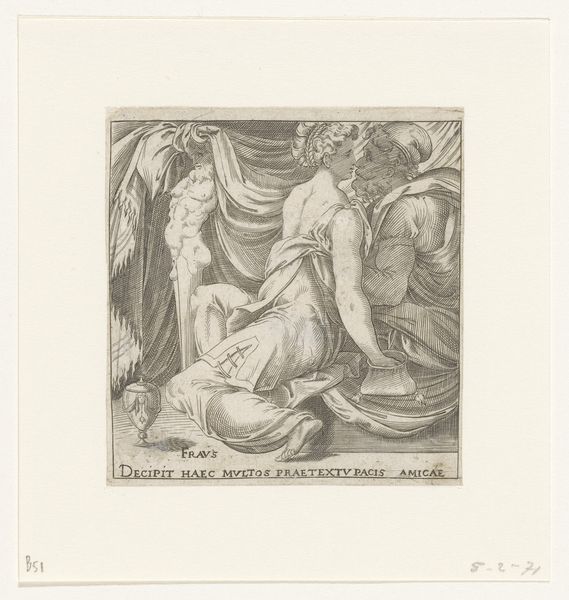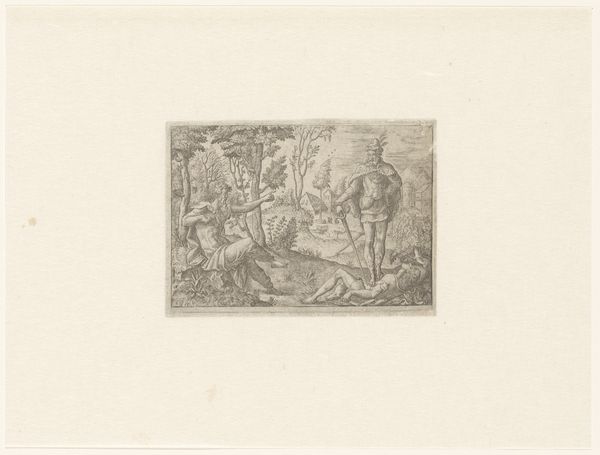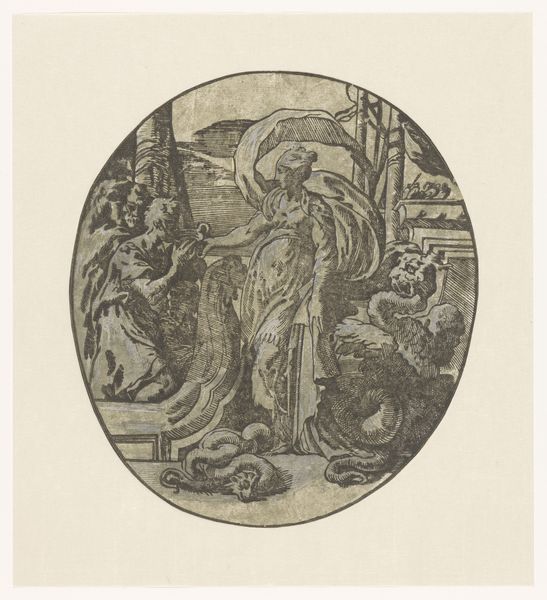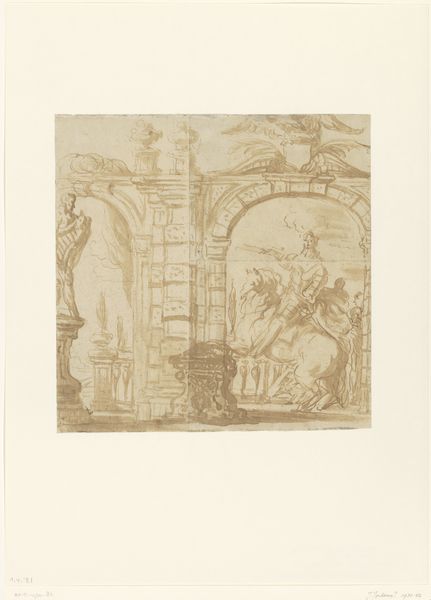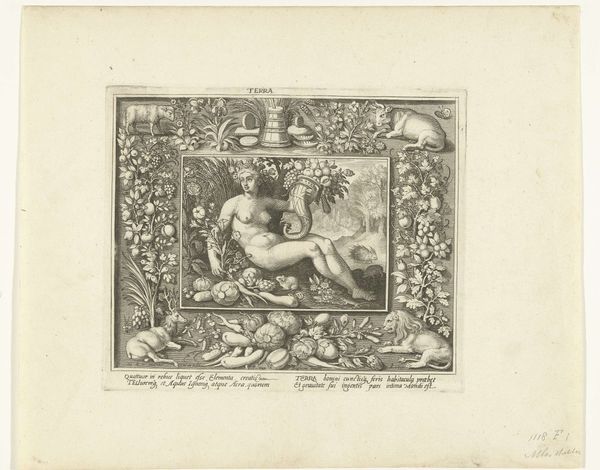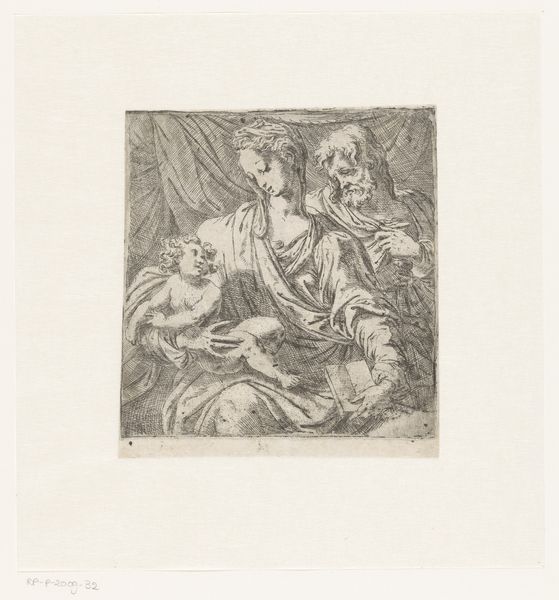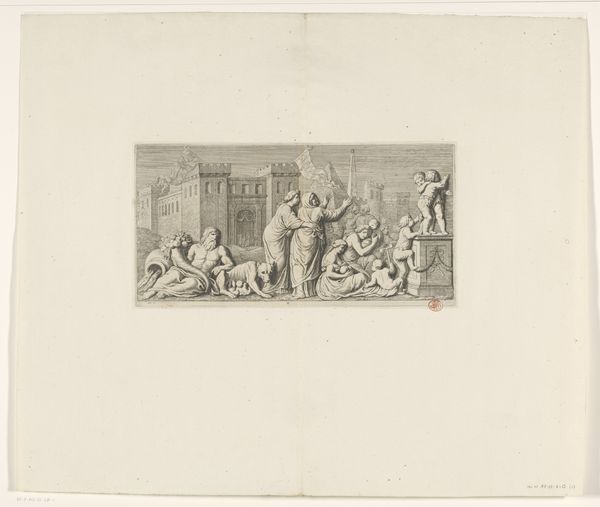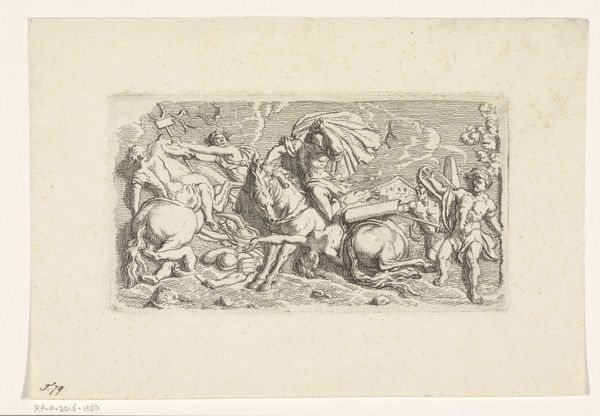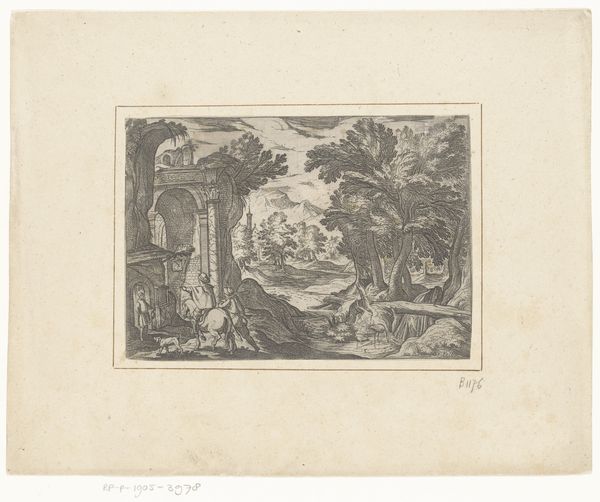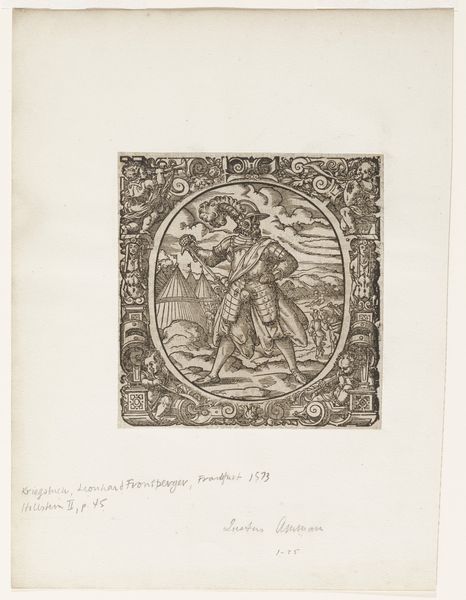
print, engraving
# print
#
old engraving style
#
mannerism
#
figuration
#
history-painting
#
engraving
Dimensions: width 254 mm, height 294 mm
Copyright: Rijks Museum: Open Domain
Editor: This engraving, "Odysseus on the Island of Circe" by Antonio da Trento, created around 1540, is teeming with mythological symbolism. It gives a distinct impression of transformation and subtle chaos. What draws your eye, what do you feel when you see it? Curator: Oh, transformation indeed! I find myself transported back to the Mannerist period. It's almost theatrical, wouldn't you say? The way Circe dominates the scene, that swirling drapery. Do you notice the bestial figures? I'm wondering, what do they evoke in you? Is it terror or something else entirely? Editor: Definitely not terror, but more a feeling of unsettling change, as if I’m walking into someone else's dream… I mean, they're men transformed into beasts, right? Curator: Precisely! Da Trento masterfully captures the tension between humanity and animalism, a popular theme in Mannerist art. The controlled chaos, the exquisite detail...it’s all meant to unsettle and intrigue. Imagine, the scent of herbs, the low growls...are we repulsed, or maybe... slightly envious of their abandon? Editor: Envious? That's unexpected. I hadn't thought about it that way. The engraving suggests judgment, a clear moral line. Curator: Perhaps... Or is Da Trento whispering that within the most civilized man, a beast still lurks? These older works hold up because of those layers. And that slightly claustrophobic circle! Doesn't that hint at entrapment, or maybe even protection, depending on your mood that day? Editor: Wow, I hadn't noticed how the circular frame contributed. I now feel like there are more complexities and depth to explore than I initially perceived! Thanks! Curator: My pleasure! That's the beauty of art, isn't it? Each viewing is a fresh voyage.
Comments
No comments
Be the first to comment and join the conversation on the ultimate creative platform.
